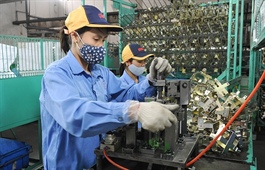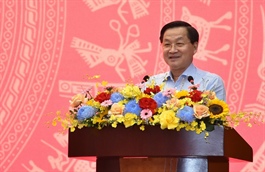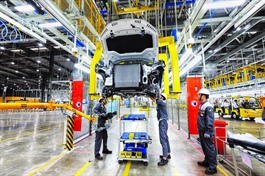Vision enriching interest from India
Vision enriching interest from India
Countries like Japan and South Korea have been lead investors in Vietnam, as we see from their capital figures and number of projects. We have also seen in recent times that a few ASEAN players like Thailand and the Philippines have emerged as significant investors in Vietnam. Singapore, in addition, has been an important partner to route businesses and sustains fair business practices in the region.
Foreign direct investment outlook varies from country to country, as does their planning to generate sustainable growth worldwide and to explore the opportunities globally by sharing their expertise and products with partner nations. India and Vietnam are golden swans in the region with ample natural resources that could make them self-reliant in hours of need, as we have seen during the pandemic.
The advantages of doing business in India and Vietnam scale above the shortcomings, which is clearly evident with their years of overseas investment sustainability through which both the countries have honoured their commitments. Although expectations rise at both ends as growth clicks in, this can be adjusted based on mutual understanding of both social and business principles.
India has excelled in the past 70 years and now it has a key role in global economic, political, and strategic capabilities. However, since India is a vast country in terms of land area as compared to several Southeast Asian countries, it has its own challenges in terms of population. It is rapidly utilising its domestic opportunities to the fullest extent to manage a giant population, create significant impressions on the international consumer market, and stabilise its GDP with huge import-export figures.
Indian industry capabilities are quite advanced and have developed significantly with time, and human resources capacities there offer a cost-effective and highly talented pool of professionals. Similar developments are seen with Vietnam as an excelling partner. Young Indian and Vietnamese people are the backbone of dynamic, resourceful, sustainable, and global visions. Enterprises in India have been deepening their roots in the Indian market and welcome Vietnamese counterparts to explore mutual possibilities.
As of February, India’s investment in Vietnam stands with 315 valid projects worth more than $918 million, mostly in the processing, manufacturing, electricity production and distribution, and mining. If we see the broader picture, then India’s investment in Vietnam from third countries comes to around $1.9 billion. Vietnam, on the other hand, has a handful of projects (mainly wholesale and retail) in India, whose total value exceeded $6 million but with the potential of up to $28 million.
Looking at bilateral trade figures, according to data from the Indian Ministry of Commerce and Industry, the trade turnover between the two nations reached $14.13 billion in the 2021-2022 fiscal year, and there are commitments to raise two-way trade to $15 billion by the end of the year.
Key exports from India to Vietnam have included iron and steel, cotton, cereals, meat and fishery products, electrical machinery and equipment, and much more; while imports into India from Vietnam mostly consist of electrical equipment, chemicals, machinery, copper and rubber, coffee, tea and spices, footwear, and medical and surgical equipment.
Under the Mekong Ganga Cooperation framework, India has been taking up Quick Impact Projects, each valued at $50,000, in different provinces of Vietnam to develop community infrastructure. This initiative will surely create a significant impact at the grassroots level.
In order to realise big dreams for mutual business cooperation, it is essential to focus on capacity building. India has been supporting this noble cause under the Indian Technical and Economic Cooperation programme. Under this, India has offered short-term courses in Indian institutions to nearly 3,000 Vietnamese participants over the years. Also, the Indian Council of Cultural Relations offers nearly 50 scholarships for Vietnamese aspirants every year.
In June, the prime minister of Vietnam approved the nation’s strategies for foreign investment cooperation for the 2021-2030 period. The decision includes a number of objectives, one of which is raising the ratio of registered capital from countries and territories of some specified regions to more than 70 per cent by 2025 and 75 per cent by 2030, wherein, among others, India is given focus from Asia.
Several major enterprises from India such as Adani Group, Mahindra, SRF Chemicals Ltd., and Suzlon are also keen on investing in Vietnam with a diversified portfolio, according to the Indian Industries Association.
Adani Group, which has a presence in over 50 countries worldwide, has already pledged to pour $10 billion into several key sectors in Vietnam. As part of this, a joint venture between Adani and Vietnam’s Anh Phat Investment Construction and Trading JSC has been given the green signal in Danang to ascertain the feasibility of development of a major seaport in the central city, which will be critical for Vietnam as a whole.
The Vietnamese economy has resumed this year, and businesses are getting busier. In tandem, the country is working on policies for key sectors such as power and energy, banking and finance and more. In the current state of global transitional turmoil, the market awaits clarity on the regulations to implement mutually agreed goals.



















